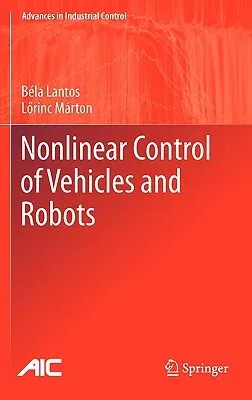Tracking of autonomous vehicles and the high-precision positioning of
robotic manipulators require advanced modeling techniques and control
algorithms. Controller design should take into account any model
nonlinearities.
Nonlinear Control of Vehicles and Robots develops a unified approach
to the dynamic modeling of robots in terrestrial, aerial and marine
environments. To begin with, the main classes of nonlinear systems and
stability methods are summarized. Basic nonlinear control methods useful
in manipulator and vehicle control - linearization, backstepping,
sliding-mode and receding-horizon control - are presented. Formation
control of ground robots and ships is discussed.
The second part of the book deals with the modeling and control of
robotic systems in the presence of non-smooth nonlinearities including
analysis of their influence on the performance of motion control
systems. Robust adaptive tracking control of robotic systems with
unknown payload and friction in the presence of uncertainties is
treated.
Theoretical (guaranteed stability, guaranteed tracking precision,
boundedness of all signals in the control loop) and practical
(implementability) aspects of the control algorithms under discussion
are detailed. Examples are included throughout the book allowing the
reader to apply the control and modeling techniques in their own
research and development work. Some of these examples demonstrate state
estimation based on the use of advanced sensors such as Inertial
Measurement System, Global Positioning System and vision systems as part
of the control system.
Nonlinear Control of Vehicles and Robots will interest academic
researchers studying the control of robots and industrial research and
development engineers and graduate students wishing to become familiar
with modern control algorithms and modeling techniques for the most
common mechatronics systems: vehicles and robot manipulators.

